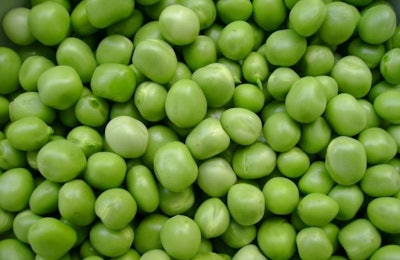
Could a new pea variety be about to give poultry producers a way of getting more out of their poultry diets?
Scientists at the U.K.’s John Innes Centre think it could, as the new variety does not have the inhibitors that usually stop proteins from being fully absorbed by humans, poultry and livestock. Additionally, it won’t face the problems blocking genetically modified crops in some markets as non-GM methods were used in its development.
Doing more with less
If the “perfect pea” is commercialized, it should reduce costs for poultry producers because fewer of the peas will be needed to give the same or higher nutritional benefits than standard peas. An additional benefit will be that better protein digestion will decrease the nitrogen in manure, reducing the risk of watercourse pollution.
As importantly, the new pea is not expected to cost more than those currently available, and should be as acceptable to poultry as those varieties currently fed as there is not expected to be any difference in taste.
Wild at heart
Inhibitors have been a longstanding problem in poultry and livestock diets, and their reduction or removal has been the target of various strategies in the past, but all achieved only limited success.
John Innes’ researchers, however, used alternative methods, and their work offers the potential to either half or abolish inhibitory activity. Their approach, they believe, could be applied to other seed proteins, not just peas.
The center maintains a large germplasm resource and, from it, scientists identified a wild pea, Pisum elatius, that was found to lack the protein defined as anti-nutritional. It crossed readily with the cultivated pea Pisum sativum, providing the team with a head start in development, and the researchers believe their pea could reach the market within five years and be widely used in poultry diets.















